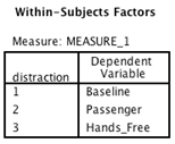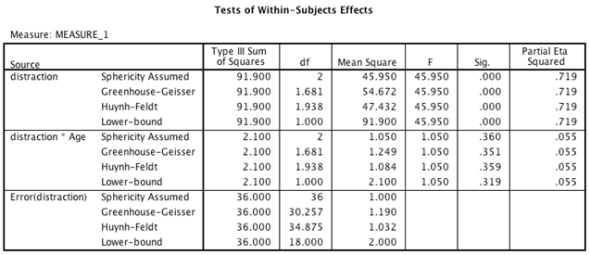An experiment was done to compare the effect of having a conversation via a hands-free mobile phone,having a conversation with an in-car passenger,and no distraction (baseline) on driving accuracy.Twenty participants from two different age groups (18-25 years and 26-40 years) took part.All participants in both age groups took part in all three conditions of the experiment (in counterbalanced order) ,and their driving accuracy was measured by a layperson who remained unaware of the experimental hypothesis. Which of the following sentences regarding the results of the simple contrasts of the distraction variable is correct? 


Definitions:
Partnership
A business structure in which two or more individuals manage and operate a business in accordance with the terms and objectives set out in a partnership agreement.
Personal Liability
The legal responsibility of an individual to settle debts or obligations from their own assets, rather than those protected by a corporation or limited liability entity.
Business Debts
Obligations that a business incurs as a result of operating activities, including loans, accounts payable, and any other form of borrowed money.
No Personal Liability
A legal principle that protects individual actors within a corporation or legal entity from bearing personal financial responsibility for the entity's liabilities.
Q3: When interpreting a correlation coefficient, it is
Q4: Imagine we wanted to compare a group
Q5: A researcher had a categorical variable that
Q5: Multilevel models where changes over time in
Q11: An experiment was done to compare the
Q11: R<sup>2</sup> is:<br>A)The percentage of variance in the
Q12: A researcher summarizes her results of research
Q13: An R-matrix could be used to assess
Q27: A kurtosis value of -2.89 indicates:<br>A)There is
Q29: Imagine we were interested in the effect